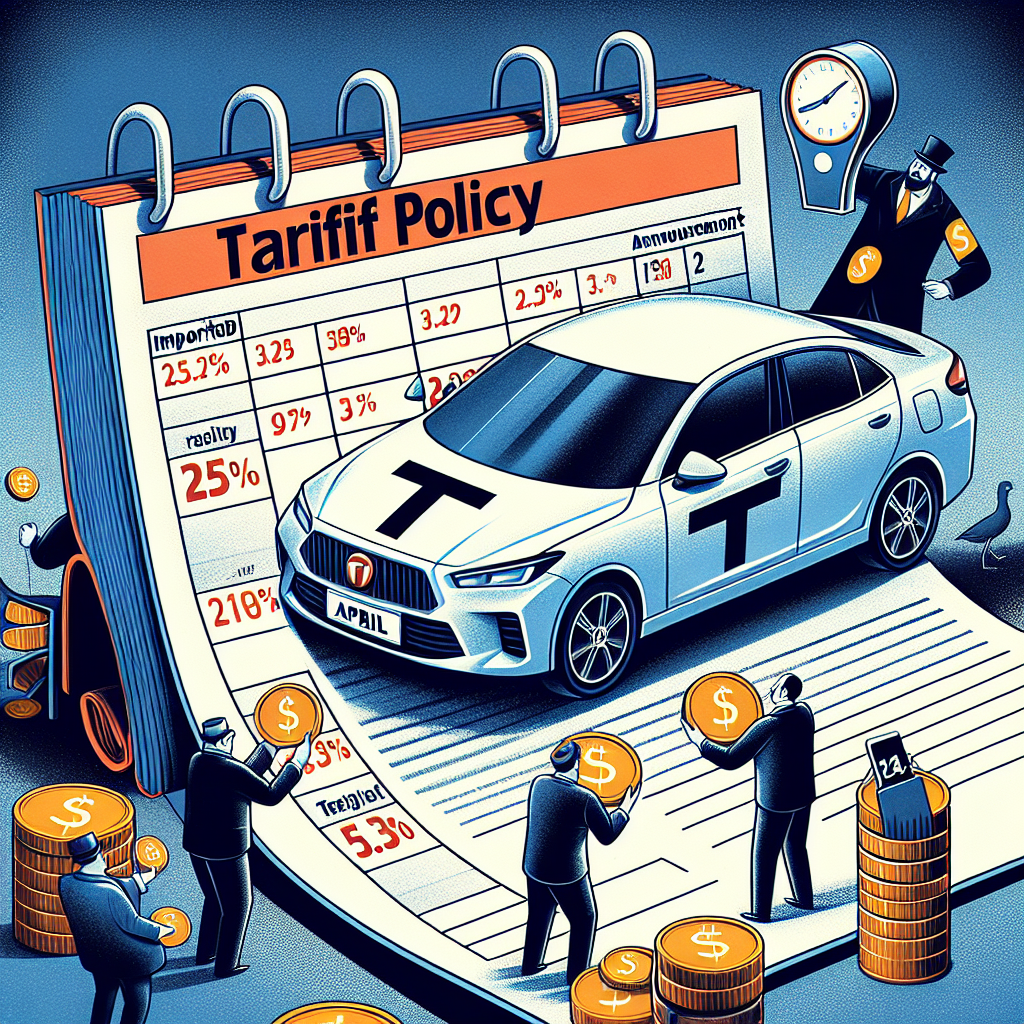From April 3, the United States will impose a permanent 25% tariff on imported cars, causing widespread concerns in the automotive industry about significant price hikes. Meanwhile, Toyota has declared that they have no intention to raise prices.
President Trump announced the tariff policy on March 26, stating that the previous basic tariff on imported cars was 2.5%, which is now increased to 25%. It is expected to generate $100 billion in annual revenue for the U.S. government. Trump mentioned that this move will incentivize foreign car companies to increase utilization of their U.S. factories, facilitating cost-effective and rapid factory expansions; U.S. automakers will also benefit as he brings automobile manufacturing back to the U.S.
The United Auto Workers Union is enthusiastic about the new tariff policy. Experts have stated to the media that President Trump’s new strategy not only protects domestic manufacturing but will also benefit American consumers and the overall economy in the long run.
According to The Wall Street Journal, Trump advised some prominent car CEOs not to raise prices in response to the tariffs. However, the automotive industry and several financial institutions predict that this new policy will lead to significant price increases.
Cox Automotive, the world’s largest automotive service and technology provider, indicated that currently only 27 car models have a base price below $30,000, with many of them already discontinued or soon to be discontinued. Reuters reported that among these low-priced models, only the Toyota Corolla is assembled in the U.S., while others come from Mexico, South Korea, and Japan, including three General Motors vehicles made in South Korea – Buick Envista, Chevrolet Trax, and Trailblazer.
In 2024, the U.S. imported nearly 8 million cars. Analysts at Cox estimate that the new tariff will result in an average price increase of about $5,300 for imported cars and $3,000 for domestically produced American cars, leading to lower- and middle-income buyers exiting the new car market and driving up the prices of used cars.
The company also noted that the tariff will not immediately apply to auto parts, and the destructive impact on domestic U.S. car production is not expected to be as severe as feared. According to Trump’s directive, the 25% tariff on car parts will come into effect no later than May 3.
Morgan Stanley analysts estimate that imported car prices will rise by 11% to 12% to offset tariff costs. Goldman Sachs analysts believe that the tariff could bring an average price increase of $5,000 to $15,000 for imported vehicles, with U.S.-made car prices also seeing a rise.
Bank of America analysis suggests that if automakers pass on the full cost of the tariff to consumers, prices of heavily affected vehicles could increase by $10,000. Currently, automakers are more likely to aim for cost neutrality until shifting production to the U.S., with prices of each imported new car potentially rising by at least $4,500.
Automotive brands most vulnerable to the tariff impact include GM (importing 49% of vehicles) along with Toyota, Hyundai, and Nissan (importing over half of vehicles). However, Toyota announced on Monday (March 31) that they have no intention to increase car prices in the U.S. market but will focus on decreasing fixed costs.
Prior to the announcement of the new tariff policy, Hyundai Motors had already declared a $21 billion investment in the U.S., including $5.8 billion to build a steel plant in Louisiana to supply electric vehicles manufactured at two Hyundai factories in the U.S. Honda is set to establish a hybrid Honda Civic production plant in Indiana to replace its Mexico production line. Multinational automaker Stellantis had earlier declared plans to expand operations in the U.S.
Shawn Fain, president of the United Auto Workers Union (UAW), expressed excitement over the new automotive tariff policy, believing that it will help the U.S. auto industry break free from harmful economic frameworks that destroy the working class and enhance industry competitiveness.
UAW sees the end of multinational competition in the auto industry as starting from repairing damaged trade agreements, and the actions of the Trump administration have created historical opportunities to bring back thousands of jobs to America.
According to the press release, U.S. companies like Ford and GM have previously laid off thousands of workers; over the past decade, U.S. car production has declined by 2 million vehicles annually; and millions of cars sold in the U.S. have been manufactured relying on cheap labor overseas.
Chris Ching, a guest lecturer at Columbia Business School, believes that Trump’s automotive tariff policy is not only a strategic means to protect domestic manufacturing but may bring about a chain reaction advantageous to American consumers and the overall economy.
In his perspective, based on the theory of “Productive Development Policies” by Harvard economist Dani Rodrik, government actions to safeguard industries in a globalized context sometimes aim to correct market failures rather than distort markets. Ching points out that as an industry with high value-added and employment-driving effects, the automotive sector benefits from Trump’s imposition of tariffs moving in this direction.
“The automotive tariffs are strategic policy tools,” Ching stated. “Trump’s new policy is not about avoiding the global market but adjusting asymmetrical rules.”
He believes that behind Trump’s push for car tariffs lies a comprehensive macroeconomic strategy based on modern economic models and empirical data and should not be misconstrued as populism or protectionism.
“This is an institutional adjustment, a trade restructuring logic centered on national interests,” Ching said. “The long-term interests of American consumers necessitate this proactive, rationally designed industrial policy.”

